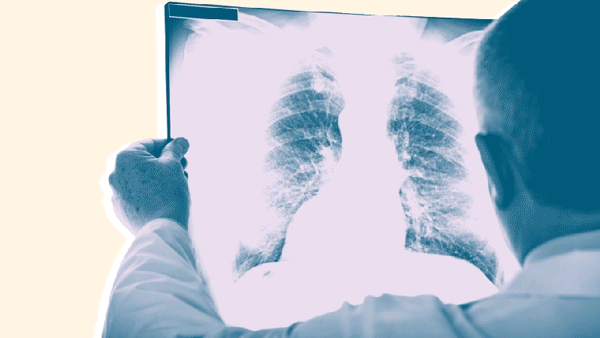
COVID-19 has made life tough for everybody who needed health care over the last year, but especially challenging for transplant patients. The pandemic has disrupted the referral and listing process, led to the postponement and cancellation of many transplant procedures, and made it more challenging for transplant patients to get the pre- and post-transplant care they require.
For one woman with chronic obstructive lung disease, finally getting her transplant wasn't the happy end to her transplant story. In a recent case study, published in the American Journal of Transplantation, doctors say a Michigan woman became infected with COVID-19 after receiving a tainted double-lung transplant from a donor who turned out to carry SARS-CoV-2, the virus that causes COVID-19, despite showing no symptoms and initially testing negative. The unnamed woman died last fall, two months after her transplant at University Hospital in Ann Arbor.
Officials at the University of Michigan Medical School believe it may be the first proven case of COVID-19 in the US in which the virus was transmitted via an organ transplant (and it's the only confirmed case out of almost 40,000 transplants in 2020).
The officials are calling for more exhaustive testing of lung transplant donors, including the testing of samples from deep within the donor lungs as well as the nose and throat. They also suggest "enhanced personal protective equipment for health care workers involved in lung procurement and transplantation" after a surgeon who handled the donor lungs was also infected with the virus and fell ill, but later recovered.
"We would absolutely not have used the lungs if we'd had a positive COVID test," co-author Daniel Kaul, MD, director of Michigan Medicine's transplant infectious disease service, said in a statement from Kaiser Health News, as reported by NBC News. He added, "all the screening that we normally do and are able to do, we did." This included routine collection of nose and throat samples from both the organ donor (a woman from the Upper Midwest, who died after suffering a severe brain injury in a car accident) and the recipient, which all tested negative for SARS-CoV-2.
But three days after the transplant operation, the recipient showed concerning symptoms. She had a fever, she experienced breathing difficulties, and her blood pressure fell. Hospital imaging revealed signs of a lung infection, and when her condition got worse (she developed septic shock and heart function problems), doctors tested her for SARS-CoV-2. The samples from her new lungs came back positive, which led doctors back to samples from the transplant donor. Tests showed that a swab from the donor's nose and throat retrieved 48 hours after her lungs her procured were negative, and her family confirmed that she had no history of recent travel or known exposure to anybody with the disease. Nor was she displaying any COVID-19 symptoms.
It wasn't until doctors returned to a sample of fluid washed from deep within the donor lungs that they got a positive COVID-19 result. Four days after the transplant, the surgeon also tested positive, and genetic screening showed that the transplant recipient and the surgeon were both infected by the donor.
Despite being treated with a range of known COVID-19 treatments, including the newly approved drug remdesivir and convalescent blood plasma from people previously infected with the disease, the patient's health deteriorated to the point where the only option was extracorporeal membrane oxygenation (ECMO). But it didn't work, and life support was withdrawn. She died 61 days after her transplant.
During the pandemic, organ donors have been tested routinely for SARS-CoV-2, even though it's not required by the Organ Procurement and Transplantation Network (OPTN), which monitors transplants in the US. But the Michigan case highlights the importance of more thorough sampling before a transplant, particularly in areas with high rates of COVID-19 transmission, Dr. Kaul said.
The information in this story is accurate as of press time. However, as the situation surrounding COVID-19 continues to evolve, it's possible that some data have changed since publication. While Health is trying to keep our stories as up-to-date as possible, we also encourage readers to stay informed on news and recommendations for their own communities by using the CDC, WHO, and their local public health department as resources.
To get our top stories delivered to your inbox, sign up for the Healthy Living newsletter
Source: Read Full Article
